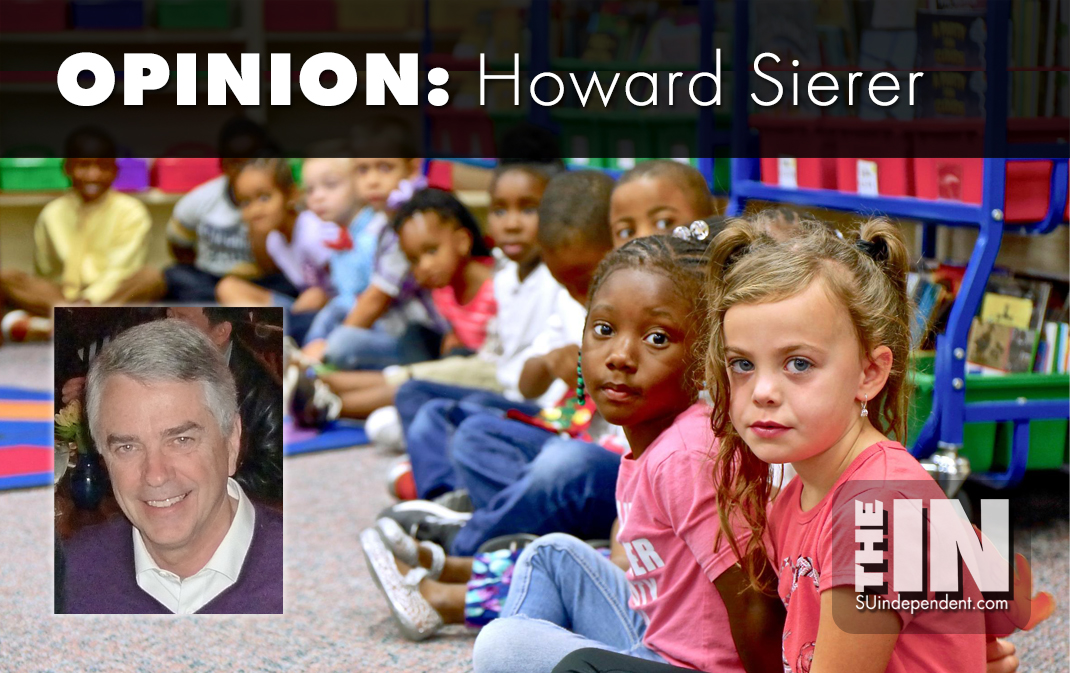
Republicans Reduce Child Poverty, Progressives Hyperventilate
– By Howard Sierer –
In 1993, the child poverty rate was 27.9%. It fell to 11.4% by 2019. What happened?
A Republican-controlled Congress passed the Personal Responsibility and Work Opportunity Act of 1996, tying benefits to jobs for those able to work. Pres. Clinton signed the bill, saying it will “make welfare what it was meant to be: a second chance, not a way of life..”
Progressives hyperventilated, saying the act would plunge millions into poverty. Two high ranking officials in Clinton’s Department of Health and Human Services resigned in protest.
Democratic Sen. Daniel Patrick Moynihan asked, “If, in 10 years’ time, we find children sleeping on grates, picked up in the morning frozen, and ask, ‘Why are they here, scavenging, awful to themselves, awful to one another,’ will anyone remember how it began?”
The words in the Act’s title – “personal responsibility” and “work opportunity” – are foreign to progressives who see them as code words for oppressing the poor and needy. Facts and data are insufficient to convince these folks that a Republican-sponsored program could be anything but a social policy disaster.
Child Trends, a nonpartisan research organization focused on children and youth, documents what we’ve learned from this historic improvement in child welfare. Its recent report, Lessons from a Historic Decline in Child Poverty, shows that instead of destitute families and social breakdown, economic and social conditions improved dramatically for the poor.
As Clinton and the Republican Congress had predicted, welfare rolls declined precipitously from 5.1 million families in 1994 to just over 2 million in 2000. Benefits like the Supplemental Nutrition Assistance Program (“food stamps”) and the Earned Income Tax Credit (EITC) programs provided a safety net for families. Teen pregnancy rates dropped dramatically.
Compare these results with progressives’ preferred welfare policy, Pres. Johnson’s 1964 War on Poverty. That program’s “Aid to Families with Dependent Children” offered cash to non-working families. At first blush, this approach seems attractive and simple: If people are poor because they don’t have enough money, give them more money and they will no longer be poor.
However, with no incentive to work, many families – especially single moms – chose to live on that government cash alone. The result: over the 26-year span from 1967 to 1993, the child poverty rate declined only slightly from 28.4% to 27.9%.
In contrast, the years following the Republicans’ 1996 welfare reform were characterized by a strong safety net that insisted on attaching cash to work. The resulting decline in child poverty was more than 30 times larger, down to 2019’s 11.4%.
A new generation of progressives want to resurrect Johnson’s failed policy. They continue to complain that as a result of the Republican law, “the federal safety net for poor families was torn to shreds,” that it “barely exists at all,” and that it is “woven…with deliberate and large holes” and “does not want” to help people out of poverty.
These progressives believe one helps the poor by giving them unconditional cash; anything less demonstrates disregard for the poor. That the Republican approach is clearly more effective in fighting poverty seems not to matter to these critics.
Unconditional cash creates the wrong incentives and reduces the consequences of bad decisions. Without connecting that cash to work for those who are able, there is no encouragement to make better choices.
Conservatives believe that the goal of poverty programs is to move families out of poverty, not to sustain them on public programs indefinitely. That can’t happen unless people receiving government support and who are able to work get into the workforce.
The 1996 welfare reform provided definitive proof that tying welfare benefits to work is the best way to help the poor, providing them work opportunities that lead to personal responsibility. Sadly, a new generation of progressives, exemplified by those recent complaints above, have forgotten this hard-won lesson and want to put new generations of the poor on the dole.
Viewpoints and perspectives expressed throughout The Independent are those of the individual contributors. They do not necessarily reflect those held by the staff of The Independent or our advertising sponsors. Your comments, rebuttals, and contributions are welcome in accordance with our Terms of Service. Please be respectful and abide by our Community Rules. If you have privacy concerns you can view our Privacy Policy here. Thank you!
Click here to submit an article, guest opinion piece, or a Letter to the Editor





Irresponsible analysis of data. Critical thinking is lacking here.
P. Smith,
I’ll be very interested in your critical thinking about why/how “In 1993, the child poverty rate was 27.9%. It fell to 11.4% by 2019.” Do you dispute the facts as reported in the “Lessons from an Historic Drop in Child Poverty?” This is the non-partisan source I hyperlinked above for data and whose non-partisan authors regard the drop as “historic.” Do you have better data? Your “critical thinking” on this topic might enlighten us all.
I’m standing by to see whether you have something more substantial than a quick, offhand comment to offer or whether, lacking any insights, you are just one of “these folks that [automatically believe] a Republican-sponsored program could be anything but a social policy disaster.